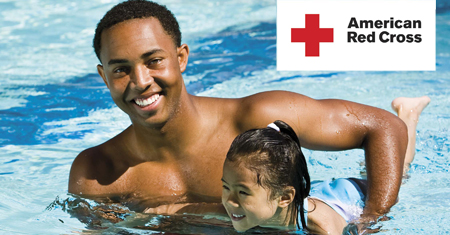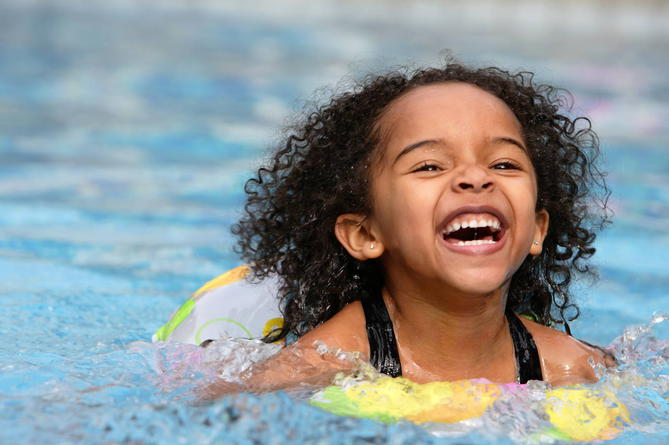by Upulie Nawaratne M.D. and Bonnie Rachman M.D.
Division of Pediatric Critical Care
Kevin*, age 5 years, and Timmy, age 7 years, begged their mom, Sara, to let them play in the pool for just a few more minutes before bedtime. It was an unusually warm June evening, so Sara agreed and she stayed by the pool to watch them. Both kids had been taking swimming lessons but they weren’t good swimmers yet. Sara knew that even little babies were being taught to swim so she thought her big boys were ready. The doorbell rang, so she told the boys to stay on the pool steps and she ran to answer it. She thought she would be gone for just a minute. Sara’s neighbor was at the door to arrange carpool.
Unfortunately, while Sara was talking with her neighbor, Kevin slipped on the pool step and fell into the water. He tried to swim but panicked and sunk. Timmy tried to help his brother, but failed. Then he ran to get his mom. Kevin was already at the bottom of the pool. When Sara got Kevin out of the pool, he wasn’t breathing. She tried to revive him and told Timmy to call 911. She hadn’t learned CPR because she thought it was only for experts. When the paramedics arrived, Kevin wasn’t breathing and his heart wasn’t beating. They started CPR, which they continued until they arrived in Harbor-UCLA’s emergency room. In the ER, the medical team continued CPR for nearly an hour. His heart started beating weakly and he was transferred to the pediatric intensive care unit (PICU). However upon arrival in the PICU, his heart stopped and Kevin died.
 Kevin’s story is all too familiar for pediatricians. Annually in the U.S., more than 3,500 children die due to drowning, and most are preventable. Drowning is the second leading cause of accidental death in children ages 1-14 years (motor vehicle collisions is the leading cause). Drowning accounts for about 30% of all deaths for children ages 1 to 4 years. The highest death rates due to drowning are in children younger than 5 years and teen boys 15 to 19 years old.
Kevin’s story is all too familiar for pediatricians. Annually in the U.S., more than 3,500 children die due to drowning, and most are preventable. Drowning is the second leading cause of accidental death in children ages 1-14 years (motor vehicle collisions is the leading cause). Drowning accounts for about 30% of all deaths for children ages 1 to 4 years. The highest death rates due to drowning are in children younger than 5 years and teen boys 15 to 19 years old.
Males are four times more likely to die from drowning than girls of the same age. African-Americans are 5 to 10 times more likely to drown when compared to Caucasians. Less access to swimming pools and fewer swimming skills are thought to be factors contributing to this disparity. American Indians and Alaskan Natives also have higher rates of drowning compared to Caucasians, but the setting is more likely to be natural bodies of water than pools.
Children can drown in more than just pools or the ocean. Bathtubs, buckets and toilets are the most common places for drowning for children younger than one year of age. Home swimming pools are the most common location for children 1 to 5 years of age. Oceans, lakes, and ponds are often where adolescents and adults drown. Sometimes, alcohol or drugs are involved for the older age groups. In addition, teens and adults often believe they are stronger swimmers than they actually are, contributing to their risk.
Not all victims die from their submersion. Near drowning is defined as survival for more than 24 hours after a water submersion. It accounts for an additional 3,500 injuries for children each year. These submersion events can lead to lung complications, fluid and electrolyte imbalances, permanent brain damage, and some victims subsequently die. Prompt resuscitation can determine survival and long-term outcome.
The ability to swim is an important life skill for all children. However, nearly 70% of African-Americans and 60% of Hispanics do not know how to swim. Learning basic swimming skills, including controlled breathing, floating, and getting across a distance, can decrease risks.
Infant swimming lessons are fun for babies and parents, and they help the infants learn how to float. However, lessons cannot teach infants how to get to safety at the side of the pool or to climb the ladder. Infants and toddlers do not have the physical ability or judgment to complete these tasks.
Recognizing the frequency of drowning for children and teens, the American Academy of Pediatrics (AAP) posted a video on YouTube to promote safe swimming. The AAP emphasizes some basic safety principles including:
- Never leave children alone near water
- Use “touch” supervision when kids are in the pool, meaning always have them within reach
- Pools should be surrounded on four sides, with 4-ft tall fences with self-locking gates
- Put away all pool toys, because they can be tempting for children
- Deflate temporary pop-up (“kiddie”) pools when finished playing
- All children should have swim lessons as soon as they are developmentally ready
- Parents, older children and pool owners – really everyone developmentally capable – should learn CPR
The American Red Cross offers classes for water safety, swimming and CPR. During June and July, all Los Angeles County YMCA facilities are offering free participation for adolescents – an offer to good to pass up.
Drowning is preventable. Children should never be left alone in a bathtub, swimming pool or any body of water, not even for a moment. Supervision by an adult, at all times, is mandatory.
Fences around pools that are self-closing and have childproof latches are effective barriers. These fences reduce the risk of drowning by about 80% but only when they are in good condition and closed.
Recreational activities such as boating, water skiing, jet skiing and surfing require wearing life jackets. Alcohol should never be consumed when participating in water sports.
Kevin’s tragedy was preventable. As pediatric intensivists, our hope is to never again see a child like Kevin. With working together – with our families, local agencies, and community resources – we can prevent drowning deaths.
*Kevin’s story is based on real PICU cases.

